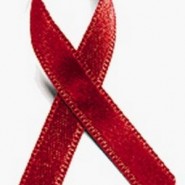
On November 8, 2011, Secretary of State Hillary Rodham Clinton spoke at the National Institutes of Health on “a vision for the next steps in the fight against HIV/AIDS.”
She called on the world to join the United States in working to achieve the goal of an AIDS-free generation—a generation with virtually no children born with the virus; a generation of children who, as they become teenagers and adults, are at a far lower risk of becoming infected than they would be today, thanks to a wide range of prevention tools; a generation of people who, if they do acquire HIV, have access to treatment that helps prevent them from developing AIDS and passing the virus to others.
Secretary Clinton discussed the three key scientific interventions that have been identified as pivotal: stopping mother-to-child transmission, expanding voluntary male circumcision, and scaling up treatment as prevention. When used together along with condoms and other prevention tools, these three interventions offer a historic opportunity to drive down the worldwide rate of new infection.
In her remarks, Secretary Clinton issued a specific call to action to the world to achieve the goal of an AIDS-free generation:
- Science must guide these prevention efforts.
- Partner countries must have ownership of their AIDS programs and share more responsibility for funding the fight against AIDS within their borders.
- Other donor nations must do more, including supporting and strengthening the Global Fund to Fight AIDS, Tuberculosis and Malaria.
AIDS has killed 30 million people around the world, and 34 million are living with HIV today. In sub-Saharan Africa—where 60 percent of the people with HIV are women and girls—AIDS has left a generation of children to grow up without mothers, fathers, or teachers. Secretary Clinton pointed out that today, thanks both to new knowledge and to new ways of applying that knowledge, we have the chance to give hope and a future to millions of people who are alive today—and equally, if not profoundly more importantly, to an entire generation yet to be born.
South Africa has the highest number of people living with HIV in the world. KwaZulu Natal, the province where the projects we are supporting are located, has the highest HIV rate in South Africa. The Umkhanyakude District, where the new child development center will be located, has an adult HIV prevalence rate of 25 percent and a prevalence rate for young women between 25 and 29 years of age of 59 percent. Yet, in spite of these staggering statistics, individuals like Sister Priscilla Dlamini and Nonhlanhla Sabela are stepping up and dedicating their lives to making a difference in their communities. And communities are coming together to build a better future for their children.
While governments and large organizations are being called on to step up their work for the prevention and treatment of AIDS, individuals like you and me can step up to support families and communities who have a dream for changing the future of their children. As has been shown so clearly in our country, early intervention with children can prepare them for success in school and give them a head start in changing their lives. Research has shown early education provides a sound basis for learning and helps to develop skills, knowledge, personal competence and confidence, and a sense of social responsibility. By sharing a little of what we have with people who have so little, we can know we are actually making a difference, helping these children and their families have a future they didn’t have before.
Secretary Clinton ended her address by saying:
“The goal of an AIDS-free generation may be ambitious, but it is possible with the knowledge and interventions we have right now. And that is something we’ve never been able to say without qualification before. Imagine what the world will look like when we succeed. Imagine AIDS wards that once were stretched far beyond their capacity becoming outpatient clinics caring for people with a manageable condition, children who might have been orphaned and then trafficked or recruited as child soldiers instead growing up with the hope of a better future, communities where despair once reigned filled instead with optimism, countries that can make the most of every single person’s God-given potential. That is the world that has always been at the core of American belief, and we have worked toward it in our own history. It’s the world I think we all would like to live in. An AIDS-free generation would be one of the greatest gifts the United States could give to our collective future.”
A new report by the Joint United Nations Program on HIV/AIDS (UNAIDS) shows that 2011 was a game-changing year for the AIDS response, with unprecedented progress in science, political leadership, and results. The report also shows that new HIV infections and AIDS-related deaths have fallen to the lowest levels since the peak of the epidemic.
As we approach World AIDS Day on December 1, the words of Secretary Clinton and the report by UNAIDS offer us all optimism that this devastating pandemic may one day be behind us as well as hope that this year’s World AIDS Day theme, Getting to Zero, might actually be our future.

